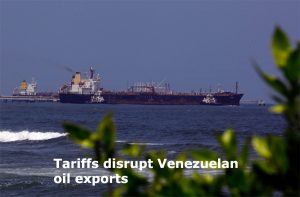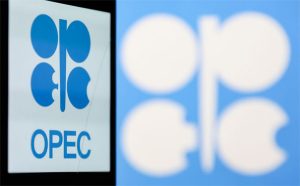
Mayra P. Saefong, William Watts, MarketWatch
SAN FRANCISCO/NEW YORK
EnergiesNet.com 06 29 2022
Oil futures settled higher on Tuesday, as doubts over the ability of Saudi Arabia and the United Arab Emirates to significantly boost output and unrest in Ecuador and Libya helped lift prices up for a third session in a row to their highest finish since mid-June.
Price action
- West Texas Intermediate crude for August delivery CL.1, 0.20% CL00, 0.20% CLQ22, 0.21% rose $2.19, or 2%, to settle at $111.76 a barrel on the New York Mercantile Exchange. That was the highest front-month contact finish since June 16, according to Dow Jones Market Data.
- August Brent crude BRNQ22, -0.06%, the global benchmark, added $2.89, or 2.5%, to $117.98 a barrel on the ICE Futures Europe, also the highest since June 16. September Brent crude BRN00, 0.08% BRNU22, 0.08%, the most actively traded contract, rose $2.82, or 2.5%, to $113.80 a barrel.
- Back on Nymex, July gasoline RBN22, -1.47% climbed nearly 2.6% to $3.9351 a gallon.
- July heating oil HON22, -1.83% lost 0.7% at $4.1994 a gallon.
- July natural gas NGN22 rose 0.8% to end at $6.551 per million British thermal units on the contract’s expiration day. The new front month August contract NGQ22, 3.84% settled at $6.57, up 0.4%.
Market drivers
Crude found support after news reports said French President Emmanuel Macron was overheard Monday telling U.S. President Joe Biden on the sidelines of a Group of Seven summit in Germany that Saudi Arabia and the United Arab Emirates had little room to boost crude output in the near term.
Macron told Biden that he had been informed by Sheikh Mohammed bin Zayed al-Nahyan, the leader of the U.A.E, that the country was at maximum production capacity and that the Saudis can increase production by 150,000 barrels a day or slightly more, but “don’t have huge capacities before six months time.”
However, U.A.E.’s energy minister later clarified that the country was producing near maximum capacity based on its OPEC+ production-agreement baseline of 3.168 billion barrels a day, Reuters reported.
Saudi Arabia and the U.A.E. are the only countries in OPEC+ — made up of the Organization of the Petroleum Exporting Countries and their allies, including Russia — that have been seen as capable of significantly boosting production. OPEC+ ministers meet later this week, while Biden is set to travel to Saudi Arabia next month.
Read: Don’t expect any surprises from OPEC+, even as recession worries weigh on oil prices
Given very limited spare capacity, “we think Saudi Arabia will seek to be judicious about how it deploys its remaining barrels and will likely incrementally increase output rather than simply dumping all the barrels at once and risk losing control of the market,” said Helima Croft, head of global commodity strategy at RBC Capital Markets, in a note.
“One plausible option might be for Saudi Arabia to compensate for the production underperformance of countries like Angola and Nigeria in order to stay within the broad framework of the agreement, which runs through the end of December. Given the importance that Prince Abdulaziz publicly attaches to group cohesion, we think the Saudi oil minister would seek to elicit support from the rest of OPEC for such an arrangement in order to avoid the unilateral action optics,” she said.
In its annual statistical bulletin released Tuesday, OPEC said total world crude-oil production rose by 520,000 barrels per day, or 0.8%, to an average 69.64 million barrels a day in 2021. Oil output from OPEC members, meanwhile, rose by 2.7% year on year.
Meanwhile, Ecuador’s energy ministry had warned on Sunday that crude production could halt within 48 hours if road blocks and vandalization of oil facilities continued, news reports said.
And Libya’s National Oil Corp. on Monday said it was considering declaring a state of force majeure in the Gulf of Sirte region within 72 hours unless production and shipping is resumed.
With supplies in focus, traders awaited weekly data from the Energy Information Administration. The government agency had said the data due last week was delayed due to “systems issues.” However, it now plans to release its weekly report on U.S. petroleum supplies, covering the weeks ended June 17 and June 24, on Wednesday.
On average, analysts forecast a fall of 3.7 million barrels in crude supplies for the week ended June 17, along with increases of 500,000 for gasoline and 600,000 for distillates, according to a poll conducted by S&P Global Commodity Insights. For the week June 24, the poll showed expectations for declines of 500,000 barrels for crude, 875,000 barrels for gasoline and 525,000 for distillates.
marketwatch.com 06 28 2022












